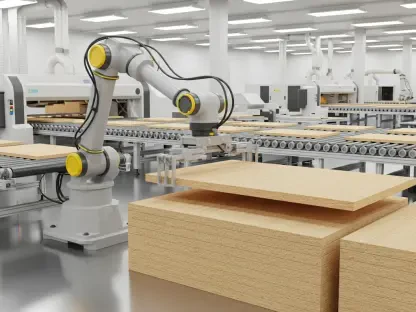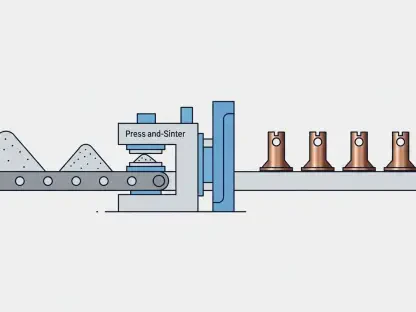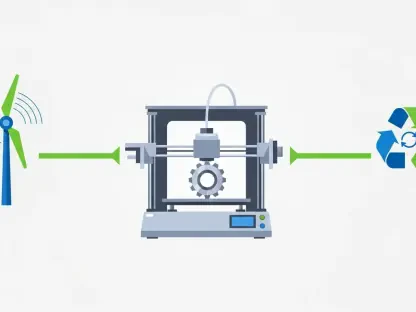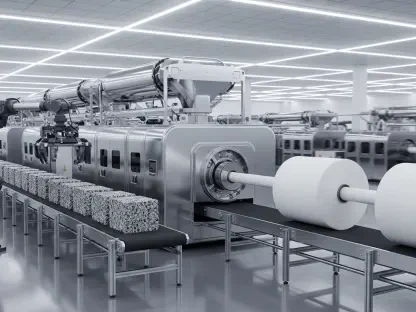Setting the Stage for a Secure Industrial Future
Imagine a sprawling manufacturing plant where every machine, sensor, and system is interconnected, driving efficiency through real-time data and automation, only to grind to a halt due to a single cyber breach. This devastating scenario, costing millions in downtime and damaging customer trust, is no longer a distant threat but a pressing reality, as cyberattacks on operational technology (OT) environments in manufacturing have surged, with cyber risks ranked among the top external threats by 30% of industry leaders. This review delves into the transformative role of OT cybersecurity, exploring how it has evolved from a secondary concern to a foundational pillar of smart manufacturing. The focus is on its current capabilities, key trends shaping its adoption, and its impact on operational resilience and innovation in the industrial landscape.
Unpacking the Core of OT Cybersecurity
Defining the Technology and Its Scope
OT cybersecurity encompasses the strategies, tools, and practices designed to protect interconnected plant floor technologies from digital threats. Unlike traditional IT security, which focuses on data and networks, OT security prioritizes the integrity of physical processes, ensuring that machinery and production lines remain operational even under attack. This technology is critical in an era where the convergence of OT and IT systems has expanded the attack surface, making manufacturing facilities vulnerable to disruptions ranging from ransomware to espionage. The significance of this field lies in its ability to safeguard not just data but the very heartbeat of industrial operations.
Integration with Smart Manufacturing
A defining feature of OT cybersecurity is its integration with smart manufacturing initiatives. With 53% of manufacturers viewing secure OT assets as a driver for broader technology investments, this technology enables innovations like AI-driven quality control and predictive maintenance. Secure networks act as the backbone for these advancements, ensuring that digital transformation does not come at the cost of vulnerability. By embedding security into the fabric of modern manufacturing, companies can harness cutting-edge tools without fear of catastrophic breaches derailing progress.
Performance in Real-World Scenarios
In practical applications, OT cybersecurity demonstrates its value by linking security metrics to tangible operational outcomes. For instance, hardened networks facilitate real-time energy management, optimizing resource use while maintaining robust defenses. Manufacturers have reported measurable gains in overall equipment effectiveness (OEE) by tying security investments to reduced downtime and faster recovery times. This performance underscores the technology’s dual role as both a protective shield and a competitive enabler in high-stakes industrial environments.
Key Trends Driving Adoption and Evolution
Widespread Implementation of Security Platforms
One of the most striking trends in OT cybersecurity is the near-universal adoption of dedicated security platforms. An impressive 96% of manufacturers are either using or planning to invest in such systems within the next five years, reflecting a consensus on the necessity of cyber resilience. The emphasis has shifted from mere deployment to proving return on investment through metrics like mean time to recovery and operational uptime. This trend highlights a maturing approach, where security is quantified in terms of business impact rather than just technical compliance.
Cybersecurity as a Growth Catalyst
Far from being a mere safeguard, cybersecurity is now recognized as a catalyst for growth in manufacturing. Secure OT environments enable the deployment of advanced applications, transforming risk mitigation into a revenue driver. Manufacturers are aligning security budgets with automation goals, ensuring that investments in protection also fuel innovation. This strategic synergy positions security leaders as key players in driving digital transformation across the sector.
Heightened Awareness of Cyber Risks
The recognition of cyber threats as a top external concern marks another pivotal trend, with a significant portion of the industry prioritizing financial exposure metrics. Executives are demanding precise data on potential losses from breaches, prompting security teams to model risks in terms of revenue impact and brand damage. Practices like tabletop exercises are gaining traction to refine response readiness, ensuring that manufacturers are not just reactive but proactively prepared for incidents.
Shift Toward Secure-by-Design Hardware
A growing focus on embedding security at the hardware level is reshaping OT cybersecurity. With 31% of manufacturers prioritizing features like secure boot and onboard telemetry, the industry is moving toward proactive risk management. Robust firmware management and security-focused procurement practices are becoming standard, ensuring that vulnerabilities are minimized from the ground up. This trend reflects a fundamental rethinking of how security is built into industrial infrastructure.
Emphasis on Cyber Skills Development
Workforce development is another critical area, as 81% of manufacturers now prioritize cyber literacy in hiring and training programs. Embedding short, practical lessons into daily operations and incentivizing secure behavior are among the strategies gaining ground. This focus on human capital ensures that technological investments are complemented by a skilled team capable of navigating complex cyber challenges, creating a holistic defense mechanism.
Challenges Hindering Full Implementation
Cultural and Leadership Barriers
Despite the momentum, cultural resistance remains a significant obstacle to OT cybersecurity adoption. A quarter of manufacturers report employee pushback and limited awareness among senior decision-makers as key barriers. Bridging this gap requires fostering a culture where cybersecurity is as ingrained as physical safety, supported by leadership commitment and recognition programs to encourage buy-in across all levels.
Technical Integration with Legacy Systems
Integrating security solutions into legacy systems poses a persistent technical challenge. Many manufacturing plants operate on outdated equipment that was not designed with cybersecurity in mind, complicating the deployment of modern defenses. Overcoming this hurdle demands innovative approaches, such as retrofitting existing infrastructure with compatible security layers, while balancing operational continuity with protection needs.
Navigating Regulatory Complexities
Regulatory pressures add another layer of complexity, as frameworks like NIS2 in Europe and CISA directives in the U.S. push for stricter compliance. While these mandates accelerate adoption, they also burden manufacturers with the need to align diverse operations under unified standards. Staying ahead of evolving regulations requires ongoing investment in compliance strategies and collaboration with industry bodies to anticipate future requirements.
Reflecting on the Journey and Next Steps
Looking back, the journey of OT cybersecurity in manufacturing reveals a remarkable transformation, as it evolved from an overlooked aspect to a cornerstone of industrial strategy. The technology proved its worth by enabling secure digital transformation, with widespread adoption of platforms and a focus on measurable outcomes like improved efficiency and reduced downtime. Challenges such as cultural resistance and legacy system integration tested the industry’s resolve, yet the commitment to cyber resilience remained steadfast, driven by the undeniable stakes of operational integrity.
Moving forward, manufacturers should prioritize cross-functional collaboration to embed a safety-plus-security mindset, ensuring that cybersecurity becomes second nature at every level. Investing in secure-by-design technologies and upskilling the workforce will be crucial to staying ahead of emerging threats. Additionally, aligning security initiatives with long-term business goals can turn protection into a strategic advantage, positioning companies to thrive in an increasingly connected and competitive landscape.









